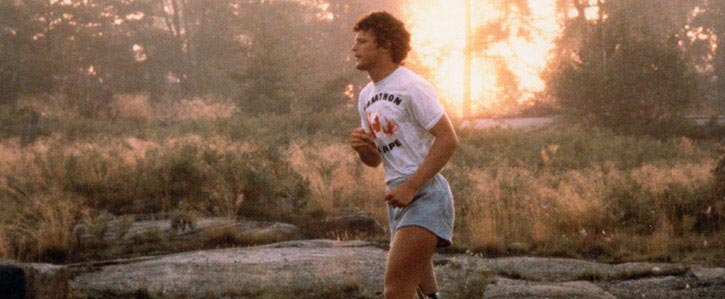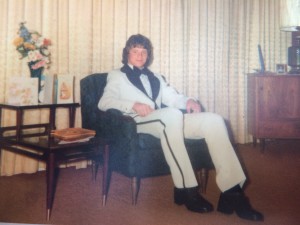Terry Fox is still inspiring Canadian kids

It was a close call out here on the West Coast for the annual Terry Fox National School Day run, with the teachers out on strike until just before before the traditional run date. But then the strike was settled and the run was able to go ahead. I checked in on Twitter to see what students were saying about the run and, I have to say, I was a bit surprised. Lots of love for Terry, of course, but also some serious teen snark about the whole Terry Fox thing. I almost started into a tedious old man, I-can’t-believe-kids-these-days harrumph but then I cast my mind back to when Terry started his Marathon of Hope. It was April of 1980 and I was in Grade 11. I vaguely remember that my friends and I weren’t exactly impressed by what Terry was planning to do. It’s shameful to admit, but when we first learned about this guy with one leg who said he was going to run across the country to raise money for cancer research, we thought, in the way of teens who are certain they know everything do, that it was a goofy idea. There he was, way the hell out in Newfoundland, and he was going to skip-skiphop all the way to the Pacific? Some of us even mimicked that skip-skiphop, laughing at our tremendous wit. It’s a memory I wish I didn’t have.
Terry wasn’t an instant phenomenon. Those early miles on The Rock were a cold, tough slog. These were pre-Internet, pre-cell phone days and there aren’t many witnesses in the middle of Newfoundland. I would have quit, if for some reason I’d ever started. And then the buzz began to build, locally first, as he churned through the rural Maritimes. Though he still wasn’t dominating the nation’s attention, even by the time he reached Montreal. That’s when things started to change. The CEO of the Four Seasons, whose son had died from cancer in 1978, threw his considerable fundraising influence behind Terry’s mission. Then, for Canada Day in the company of the country’s political elite, followed by an appearance at an Ottawa Roughriders game where the crowd roared its adulation. Still, things built slowly in those days. Carpets may have been deep and wall-to-wall, but news coverage wasn’t. If there had been, Terry would have been programming gold.
It really hit me how huge Terry was when he arrived in downtown Toronto. A massive crowd greeted him at Nathan Phillips Square. I was a Leafs fan back then (as I said, teens don’t always make the best decisions) and Leafs god Darryl Sittler ran with Terry, hordes of people following along. This was the early years of the first running boom but, out in exurbia where I lived, no one ran. What’s more, you just didn’t see people with disabilities out in the community back then. Buses didn’t kneel, sidewalks weren’t wheelchair accessible, washrooms didn’t have stalls with handrails. And here was this guy — just a kid, really — doing this impossible run, on one leg. It was unimaginable.
Terry headed out of Toronto on the long route to North Bay and beyond to Thunder Bay. It’s a slog just to drive that route but Terry kept on going. Until one day, suddenly, he couldn’t. They drove him to the hospital. The cancer was back; massive tumours in his lungs. They’d been there for a while, and yet the day before he’d run 26 miles. And 26 miles the day before that. How was that possible? In a matter of months, he looked desperately frail. He said in December of that year, “Even though I die of cancer my spirit didn’t die and that should influence a lot of people.”
 A few years ago, I went to watch my daughter, in Grade 2, run laps around the schoolyard for the Terry Fox Run. I remember watching, smiling, as the kids dashed around the field. Suddenly I got a lump in my throat. My daughter came home that day chattering about Terry and how brave he was. That Christmas, I spotted Douglas Coupland’s book about Terry while doing some last-minute shopping. I told myself it was for my daughter, but it was really really for me. In a quiet moment on Boxing Day, I sat and looked through that book. On the cover is a picture of Terry in the sort of awful grad tuxedo that I recall from my high school grad, just a few years after Terry’s. He’s sitting in a chair looking so young and excited and carefree. Ah, I thought, that must have been just before he got cancer and had his leg amputated. But it was actually a couple months after. His eyes bear no trace of tragedy or sorrow.
A few years ago, I went to watch my daughter, in Grade 2, run laps around the schoolyard for the Terry Fox Run. I remember watching, smiling, as the kids dashed around the field. Suddenly I got a lump in my throat. My daughter came home that day chattering about Terry and how brave he was. That Christmas, I spotted Douglas Coupland’s book about Terry while doing some last-minute shopping. I told myself it was for my daughter, but it was really really for me. In a quiet moment on Boxing Day, I sat and looked through that book. On the cover is a picture of Terry in the sort of awful grad tuxedo that I recall from my high school grad, just a few years after Terry’s. He’s sitting in a chair looking so young and excited and carefree. Ah, I thought, that must have been just before he got cancer and had his leg amputated. But it was actually a couple months after. His eyes bear no trace of tragedy or sorrow.
I’d always had this notion of him as some saintly hero, but Terry was a regular guy, from the suburb-like area I lived in. I never knew that Terry was such a dedicated athlete. He wasn’t physically imposing, held an unbreakable determination. After he lost his leg, Rick Hansen invited Terry to join a wheel-chair basketball team. Within two months he was a member of the national team and, in 1980, Terry was named an all-star by the North American Wheelchair Basketball Association. When he started training for his big run, he’d get up early — 4:30 early — to log miles, at age 19. I saw 4:30 in the morning a few times when I was 19, but only through a beery haze. Running caused bone bruises, blisters and cysts on Terry’s stump. After about twenty minutes, though, the pain would abate and he was good to go. It’s hard to imagine strapping on that leg and going through those twenty agonizing minutes every day. Witnessing the suffering of his fellow cancer patients made Terry realize that living selfishly was not enough.
Time eventually erases the memory of pretty much everyone. Maybe in the future people won’t remember Terry. That would be a shame. Terry was one of us and he did something impossibly hard to help ease the suffering of others. Even if time swallows his name, what Terry did will continue to ease the suffering of others. That would probably be enough for him.

